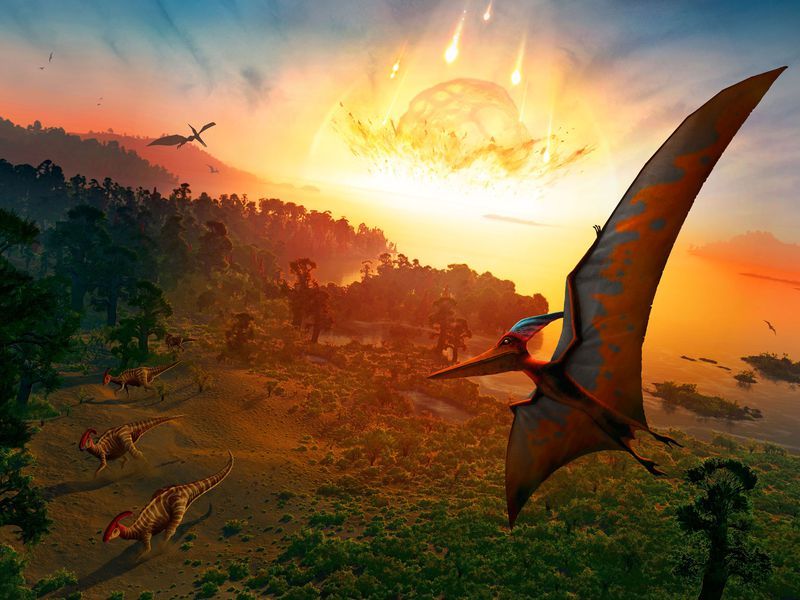
-
Published: 13 November 2023

There are many studies and theories related to the disappearance of dinosaurs from the
face of the earth, and in recent years the most likely theory has prevailed that an asteroid
collision with Earth 66 million years ago off the coast of present-day Mexico caused the
extinction of three quarters of the living world, including dinosaurs.
Edited by| Christian Megan
Science section - CJ journalist
World - November,13,2023
But the changes caused by the fall of this asteroid, known as "Chicxulub", on Earth have
remained the subject of debate. The most recent of these theories suggested that sulfur
from a collision or soot from massive fires may have been the reason for blocking sunlight
and plunging the world into a long winter.
A study, the results of which were published in the journal "Nature Geoscience" Nature
Geoscience on October 30, 2023, gave impetus to an earlier theory that it was the dust
raised by the asteroid that darkened the sky for a long time.
According to this study, asteroid debris played a decisive role in the extinction of dinosaurs,
but was not the direct cause of it. The dust from the collision of the asteroid with the Earth
is even the cause of a long 15-year winter on Earth.
Fine silica dust (powdered sand) may have remained in the atmosphere for fifteen years.
The lack of light had caused average temperatures to drop by up to 15 degrees Celsius.
In the Eighties of the twentieth century, scientists Luis and Walter Alvarez, a father and son,
talked about the possibility that dinosaurs might have become extinct after an asteroid
collision led to climate change by enveloping the Earth in dust.
This theory was in doubt until the enormous crater created by the asteroid Chicxulub was
discovered on the present-day Mexican Yucatan Peninsula about ten years later.
The theory that it was sulfur and not dust, perhaps, that changed the climate, was widely
accepted because it was believed that this dust was not the right size to "stay in the
atmosphere,"explained the researcher of the Belgian Royal Observatory Ozgur karatykin,
co-author of the study.
An international team was able to identify dust particles resulting from an asteroid impact
found at the Tanis fossil site, North Dakota, in the United States. They measure between 0.8
and 8 micrometers.
By entering their data into climate models similar to those used today, the researchers
concluded that this dust played a much larger role than previously estimated. Note that
According to the researcher karatykin, the dust particles caused the photosynthesis process
to be completely blocked in plants for at least a year, which led to a catastrophic collapse of
the plants.
Note that the simulations revealed that out of the total amount of substances projected into
the atmosphere, three quarters of them were composed of dust, 24% of sulfur, and only 1%
of soot.
